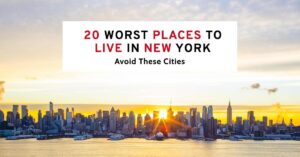The NYC housing market is currently seeing more sales activity and a slight rise in rents, with Brooklyn and Queens offering more options than Manhattan. Let's dive into the details and break down what these trends mean for you, whether you're buying, selling, or renting.
NYC Housing Market Trends: What's Happening in Summer 2025?
Home Sales
One of the biggest stories in the NYC home sales market right now is the increase in new contract signings. According to a recent report by StreetEasy, May 2025 marked the ninth consecutive month of growth, with a 5.8% year-over-year increase in new contract signings across New York City. That's a pretty big jump!
What's driving this? Experts believe it's due to pent-up demand from buyers who've been waiting for the right moment to jump in. Lower mortgage rates are also a factor making it a little easier for people to afford their dream homes.
- Key Takeaway: Sales are up, indicating a healthy, competitive market.
Comparison with National Home Sales in the U.S. in May 2025
While NYC is seeing positive sales growth, it's important to compare that to what's happening nationwide. Interestingly, recent data shows that national home sales in the U.S. actually decreased by 0.7% year-over-year (down from 4.06 million in May 2024), according to the National Association of Realtors (NAR).
- Key Takeaway: NYC is bucking the national trend and showing resilience in its sales market.
NYC Home Prices
Are Home Prices Dropping?
That's the question on everyone's mind, right? In NYC, the median asking price in May 2025 was $1.1 million, which is up 2.3% year-over-year. So, no, home prices aren't really dropping overall. They're holding steady and even increasing slightly. However, it's very hyperlocal. Different neighborhoods have different trends.
- Manhattan: The median asking price was $1,495,000.
- Brooklyn: The median asking price was $1,100,000, up 3.9% year-over-year.
- Queens: The median asking price was $695,000, a more significant increase of 10.6% year-over-year.
Comparison with Current National Median Price in the U.S.
Nationally, the median home price in May 2025 was $422,800, representing a 1.3% year-over-year increase. Clearly, NYC is significantly more expensive than the national average!
NYC Housing Supply
Here's where things get interesting. The number of homes for sale in NYC is increasing. Across the city, 3,989 homes entered the market in May, up 0.5% from a year ago. More sellers are feeling encouraged to list their properties, likely due to those elevated asking prices and slightly lower mortgage rates (compared to last year, not necessarily right now).
- NYC: 17,940 homes for sale (+11.2% year-over-year)
- Manhattan: 9,581 homes for sale (+9.4% year-over-year)
- Brooklyn: 4,402 homes for sale (+13.6% year-over-year)
- Queens: 2,996 homes for sale (+14.9% year-over-year)
Is NYC a Buyer's or Seller's Housing Market?
Despite the increase in inventory, it's not quite a buyer's market in NYC. While there are more options, the most viewed 20% of listings are still selling at their final listed price, with no price reductions. This means that the competition for desirable properties remains fierce. If you're a buyer, you need to be ready to act fast and potentially offer at or above asking price for the most sought-after homes.
Market Trends
Impact of High Mortgage Rates
Mortgage rates play a huge role in the housing market. As of July 3, 2025, the average 30-year fixed mortgage rate is around 6.67%, and the 15-year FRM is about 5.8%. While these rates might seem high compared to a few years ago, they have been relatively stable recently.
The good news is that the average 30-year fixed-rate mortgage has decreased for the fifth consecutive week. Lower rates tend to encourage more buyers to enter the market, potentially driving up demand and prices.
Most forecasts predict the 30-year FRM rate will end 2025 between 6.0% to 6.5%. Borrowers should find comfort in the stability of mortgage rates, which have only fluctuated within a narrow 15-basis point range since mid-April.
Here's a quick recap of the current mortgage rate situation:
| Mortgage Type | Current Rate (as of 07/03/2025) | Forecasted End of 2025 Rate |
|---|---|---|
| 30-Year Fixed Rate | 6.67% | 6.0% – 6.5% |
| 15-Year Fixed Rate | 5.8% | N/A |
Key Factors Affecting the NYC Housing Market
- Pent-up Demand: Many people have been waiting for the right time to buy, creating a backlog of demand that's now being unleashed.
- Mortgage Rates: While still elevated, the recent stabilization and slight decrease in rates are encouraging for both buyers and sellers.
- Inventory Levels: The increase in homes for sale provides more options for buyers, but competition for desirable properties remains strong.
- Strategic Pricing: Sellers need to price their homes strategically to attract buyers, while buyers need to be prepared to act quickly and possibly offer above asking price for the best properties.
NYC Rental Market
Let's switch gears and talk about the NYC rental market. The citywide median asking rent in May 2025 was $3,900, up 2.7% from a year ago. While rents are still high, there are some interesting trends happening in different boroughs.
- Manhattan: Rents are accelerating, with the median asking rent at $4,595, up 4.4% year-over-year. Inventory is decreasing in Manhattan, making it more challenging for renters to find options.
- Brooklyn & Queens: Rent growth is slowing down in these boroughs, and inventory is increasing. This means renters have more choices and potentially more negotiating power. Brooklyn's median rent is $3,634 (+3.8% YoY) and Queen's $3,150 (+3.3% YoY).
Fastest-Growing Rental Markets:
It's fascinating to see which neighborhoods are experiencing the most significant changes in rental inventory. Here's a look at the top 10 fastest-growing rental markets in NYC in May 2025:
| Neighborhood | Borough | Inventory (YoY Change) | Median Asking Rent |
|---|---|---|---|
| Gowanus | Brooklyn | 313 (+226%) | $4,665 |
| Flushing | Queens | 204 (+50%) | $2,568 |
| Morningside Heights | Manhattan | 218 (+46%) | $4,600 |
| Fort Greene | Brooklyn | 316 (+43%) | $4,641 |
| DUMBO | Brooklyn | 235 (+40%) | $4,454 |
| Long Island City | Queens | 1155 (+22%) | $4,444 |
| Forest Hills | Queens | 268 (+20%) | $2,700 |
| Bay Ridge | Brooklyn | 290 (+19%) | $2,400 |
| Jamaica | Queens | 213 (+17%) | $2,965 |
| Mott Haven | Bronx | 521 (+16%) | $3,130 |
As you can see, Brooklyn and Queens dominate the list, indicating that these boroughs are offering more rental opportunities. Gowanus in Brooklyn takes the top spot with a whopping 226% increase in inventory!
FARE Act Impact
The Fairness in Apartment Rental Expenses (FARE) Act, which went into effect on June 11th, is also impacting the rental market. This law requires the hiring party (typically the landlord) to compensate the rental broker. The market share of rentals that did not charge tenants a broker fee rose to 56% last month, ahead of the FARE Act, the highest of any May since the pandemic.
The improved fee transparency will make the renting process more equitable and efficient, which will be beneficial for all sides of the market.
My Take
From my perspective, the NYC housing market is still tough but showing signs of settling. The increase in listings is a positive sign for buyers, giving them more choices. But prices are still high, and competition remains fierce for desirable properties. For renters, it's a mixed bag. Manhattan is getting pricier and more competitive, but Brooklyn and Queens offer some relief. Overall, navigating the NYC housing market requires careful planning, a good real estate agent, and a healthy dose of patience.
NYC Housing Market Forecast 2025-2026: What to Expect
Thinking about buying, selling, or just plain curious about what’s going on with real estate in the Big Apple? You're not alone! A lot of people are wondering, “What’s the deal with the NYC housing market forecast?” Well, here's the short answer: while the average home value in the New York-Newark-Jersey City area is currently $705,108, up 4.5% over the past year, experts predict a slight decline in home values over the next year. Let's break down exactly why and what the future might hold.
Let’s start with the basics. As of today, owning a home in the NYC metro area is seriously expensive. But, just like any market, things are always changing. So, what's on the horizon?
The Forecast: A Detailed Look at the Numbers
Zillow, a major player in real estate data, offers some specific predictions. Here's a peek at what they're saying, focusing on the New York-Newark-Jersey City metropolitan area (essentially, NYC and its surroundings):
| Timeframe | Predicted Change |
|---|---|
| End of June 2025 | +0.1% |
| End of August 2025 | -0.2% |
| End of May 2026 (1-Year) | -1.2% |
So, Zillow's numbers suggest a very gradual cooling of the NYC housing market. We're not talking about a massive crash, but rather a slow easing.
NYC's Forecast Compared to the Rest of New York
It's interesting to see how the NYC housing market forecast stacks up against other areas in New York State. Here’s a quick comparison:
| Region | June 2025 | August 2025 | May 2026 (1-Year) |
|---|---|---|---|
| New York, NY | 0.1% | -0.2% | -1.2% |
| Buffalo | 0.3% | 0.6% | 1.4% |
| Rochester | 0.4% | 0.7% | 2.2% |
| Albany | 0.3% | 0.3% | 0.2% |
| Syracuse | 0.4% | 0.4% | 2.1% |
| Utica | 0.5% | 0.6% | 1.4% |
| Binghamton | 0.2% | 0.2% | 0.8% |
| Kingston | 0.2% | 0% | 2.7% |
As you can see, many other cities in New York are expected to see growth in their housing markets, while NYC is predicted to experience slight decline. This could be due to a variety of factors, including higher initial prices, different employment trends, and varying levels of demand.
The Big Picture: National Trends
To get a better handle on things, it's important to look at the national forecast, this can influence the prices here in New York. According to Lawrence Yun, Chief Economist at the National Association of Realtors (NAR), things are looking up for the housing market overall. He predicts:
- Existing Home Sales: Up 6% in 2025 and 11% in 2026.
- New Home Sales: Up 10% in 2025 and 5% in 2026.
- Median Home Prices: Up 3% in 2025 and 4% in 2026.
- Mortgage Rates: Average 6.4% in the second half of 2025 and 6.1% in 2026.
Nationally, it looks like a balancing act. More sales, more construction, and modestly increasing prices, fueled by slowly decreasing mortgage rates.
Will Home Prices Drop in NYC? Will it Crash?
Based on these forecasts, the answer is likely no, but also not rapidly rise. A major crash seems unlikely. Instead, expect a slight easing. This could mean a bit more breathing room for buyers, while sellers might need to adjust their expectations slightly.
Looking Ahead to 2026: A Possible Scenario
What about 2026? Given the national trends and Zillow's predictions, I think we'll see a continuation of the current pattern in the NYC housing market. A slight decrease in values (maybe another 1-2%), but not a dramatic fall. Much will depend on those mortgage rates too. If they drop more significantly, that could give the market a boost.
Top Real Estate Markets in New York
Buffalo real estate market
The Buffalo real estate investment offers a surprisingly good deal with low prices and relatively high rental rates. The Buffalo real estate market is dominated by older homes. A majority of homes in the Buffalo housing market were built before World War 2. Interestingly, this also means that many small apartment buildings are designed to serve a population that rented small units close to their jobs.
For example, roughly a third of homes are single-family detached homes, while almost half take the form of small apartment buildings. This creates an excellent opportunity for those in the market for Buffalo rental properties. You could buy a small apartment building with multiple tenants for the cost of a single rental property in a more expensive New York real estate market.
Syracuse real estate market
Syracuse's real estate market offers cheaper property with a higher return on investment and a less hostile legal climate. It is one of the better choices if you want to invest in New York state. Another issue that factors into the equation is the job market. Lots of cities have a great quality of life but almost no one can afford to live there.
The Syracuse housing market ranked 6.3 out of 10 for its job market. That’s better than rural and much of upstate New York. And it is why there is a slow trickle of people moving in to replace those who leave. That’s why the Syracuse real estate market has a net migration of 5 or a stable population. This is in sharp contrast to the depopulation seen in most Rust Belt cities. It also means Syracuse's real estate investment properties will hold their value for the foreseeable future if they don’t appreciate it.
Albany real estate market
Albany is a steadily appreciating real estate market. While it isn’t as famous or hot as NYC, it offers an affordable entry point and a massive pool of perpetual renters. Though it may not be somewhere you want to live, many locals are choosing to stay and make their homes here. And that will continue to drive demand for Albany real estate investment properties as long as they are priced right.
Rochester real estate market
You can also consider Rochester. The Rochester real estate market is stable, offering slow appreciation, affordable properties to outsiders, and good returns. It has strong, long-term potential that is only buoyed if NYC collapses. And this is one of the reasons why being everything the Big Apple isn’t is in your favor.
The Rochester real estate market enjoys a healthy population profile. Roughly a quarter of the population consists of children, and many are likely to remain due to the healthy job market. It also means that the Rochester housing market won’t crash if the job market weakens the way San Francisco collapses whenever the tech bubble bursts. Others choose to remain here because of the low cost of living.
Read More:
- How Much Do Real Estate Agents Make in New York?
- 5 Predictions That Will Define the NYC Housing Market in 2025
- Albany Housing Market Trends and Forecast for 2025
- Syracuse Housing Market Trends and Forecast for 2025
- NYC Housing Market Report: Rent Prices Are Skyrocketting
- Rent-to-Own Homes in NYC: A Pathway to Homeownership
- Long Island's Housing Crisis: Can New York Fix This Market
- New York Housing Market: These 3 Cities Are Hottest in the Nation
- New York Real Estate Market: Should You Invest Here?
- Worst Places to Live in the New York State




